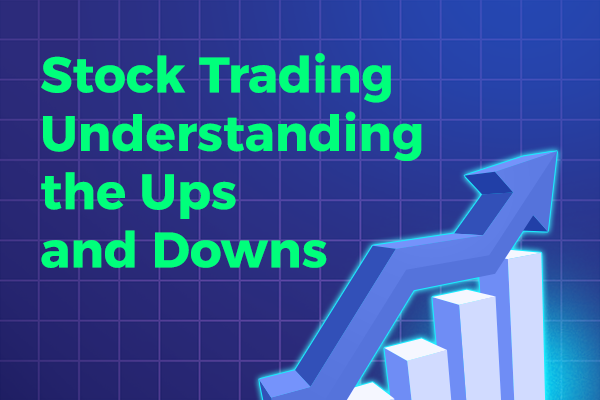In the world of financial trading, leverage is a concept that can be both enticing and intimidating. It allows traders to amplify their potential profits by borrowing money to trade with, but it also increases the risk of significant losses.
As with any investment strategy, trading leverage comes with its own set of pros and cons that every trader should carefully consider before diving in. On one hand, leverage can provide traders with the opportunity to make substantial gains with a relatively small investment.
It allows them to take larger positions in the market and potentially increase their returns. However, on the other hand, trading with leverage can be a double-edged sword.
The same magnification that can lead to big profits can also result in devastating losses if the market moves against the trader. This article will delve into the pros and cons of trading leverage, exploring whether the potential rewards are worth the inherent risks.
What is trading leverage?
Leverage, in the context of trading, refers to the use of borrowed funds to increase the potential return on an investment. It allows traders to control a larger position in the market than what they would be able to afford with their own capital alone.
For example, a trader with $1,000 in their account can use leverage to control a position worth $10,000 or more. This is achieved by borrowing money from the broker and using it as additional capital to trade with. The borrowed funds act as a loan, which the trader is required to repay, usually with interest, once the trade is closed.
Leverage is typically expressed as a ratio, such as 1:100 or 1:500. The first number represents the trader’s own capital, while the second number represents the borrowed funds. For example, a leverage ratio of 1:100 means that for every $1 of the trader’s capital, they can control $100 in the market. Higher leverage ratios allow for greater potential returns, but also increase the risk of losses.
While leverage can be a powerful tool for traders, it is important to understand that it amplifies both profits and losses. A small move in the market can result in significant gains or losses, depending on the direction of the trade. This is why trading with leverage requires careful risk management and a thorough understanding of the potential risks involved.
Pros of trading leverage
Trading with leverage offers several potential advantages for traders. Here are some of the pros of using leverage in trading:
1.Increased profit potential: Trading with leverage allows traders to control larger positions in the market with a smaller investment. This means that even a small price movement can result in a significant profit.
For example, if a trader with $1,000 in their account uses leverage to control a position worth $10,000, a 1% increase in the price of the asset would result in a $100 profit, or a 10% return on their initial investment.
2. Diversification: Leverage allows traders to diversify their trading portfolio by taking positions in multiple assets or markets. This can help spread the risk and potentially increase the chances of finding profitable opportunities.
By using leverage, traders can allocate their capital across different assets without having to invest a large amount of money in each individual trade.
3. Access to larger markets: Trading with leverage opens up opportunities to trade in larger markets that may otherwise be inaccessible to individual traders. For example, the forex market, which is the largest and most liquid market in the world, requires significant capital to trade without leverage.
With leverage, traders can participate in the forex market with a relatively small investment, giving them exposure to a wide range of currency pairs and trading opportunities.
4. Flexibility: Leverage offers traders the flexibility to adjust their trading strategies based on market conditions. It allows them to take advantage of short-term price movements and capitalize on market trends.
Traders can enter and exit positions quickly, taking advantage of opportunities as they arise. This flexibility can be particularly beneficial in volatile markets where prices can change rapidly.
5. Hedging: Leverage can be used as a hedging tool to protect against potential losses. By taking a position in the opposite direction to their initial trade, traders can offset potential losses and minimize their risk.
This strategy, known as hedging, can be particularly useful in uncertain market conditions or when traders want to protect their portfolio from adverse market movements.
While these advantages make trading with leverage appealing, it is important to note that they come with their fair share of risks.
Traders must carefully consider the potential downsides before deciding to use leverage in their trading strategies.
Cons of trading leverage
Trading with leverage carries inherent risks that traders must be aware of. Here are some of the cons of using leverage in trading:
1. Increased risk of losses: The same magnification that allows for potential profits also increases the risk of losses. Since leverage amplifies the size of a trade, even a small price movement against the trader’s position can result in significant losses.
If the market moves in the opposite direction to what the trader anticipated, they may end up owing more money to the broker than their initial investment.
2. Margin calls: When trading with leverage, traders are required to maintain a certain level of funds in their trading account, known as the margin. If the value of their positions falls below a certain threshold, the broker may issue a margin call, requiring the trader to deposit additional funds into their account to meet the margin requirements. Failing to do so may result in the broker closing the trader’s positions to limit the risk of further losses.
3. Higher transaction costs: Trading with leverage often comes with higher transaction costs, including interest charges on borrowed funds and additional fees imposed by the broker. These costs can eat into potential profits and reduce the overall return on investment. Traders must carefully consider these costs when evaluating the potential benefits of using leverage.
4. Emotional stress: The amplified nature of leverage can lead to increased emotional stress for traders. Large losses can be emotionally challenging to handle and may lead to impulsive decision-making or irrational behavior. Traders must have a strong emotional discipline and be able to manage their emotions effectively to avoid making costly mistakes.
5. Limited risk management options: While leverage can be used as a risk management tool through hedging, it also limits the available risk management options. For example, since leverage requires traders to maintain a certain margin level, they may not have enough funds to implement other risk management techniques, such as stop-loss orders or take-profit orders. This can leave traders exposed to potential losses without a clear exit strategy.
It is important for traders to carefully evaluate these risks and weigh them against the potential rewards before deciding to trade with leverage. Understanding the risks associated with leverage is crucial for implementing effective risk management strategies and protecting one’s trading capital.
Understanding the risks associated with trading leverage
Before using leverage in trading, it is essential to understand the risks involved. Here are some key risks associated with trading leverage:
1. Market volatility: Leverage amplifies both profits and losses, making traders more vulnerable to market volatility. Sudden price movements can result in significant gains or losses, depending on the direction of the trade. Traders must be prepared for increased market volatility when trading with leverage and have a clear understanding of the potential impact on their positions.
2. Liquidity risk: In highly leveraged positions, the size of the trade may exceed the available liquidity in the market. This can make it difficult to execute trades at desired prices, especially during fast market movements or in illiquid markets. Traders must be aware of the potential liquidity risks associated with their positions and consider the impact on their ability to enter or exit trades.
3. Overtrading: The allure of potential profits can tempt traders to overtrade when using leverage. Overtrading refers to excessive trading activity driven by emotions or impulsive decision-making, rather than a well-thought-out trading strategy. Overtrading can lead to increased transaction costs, higher risk exposure, and a higher likelihood of making costly mistakes.
4. Unpredictable market events: Financial markets can be influenced by unexpected events, such as economic data releases, geopolitical events, or natural disasters. These events can cause sharp and sudden price movements, resulting in significant gains or losses for traders. When trading with leverage, traders must be prepared for the possibility of unpredictable market events and have appropriate risk management strategies in place.
5. Counterparty risk: When trading with leverage, traders rely on their brokers to provide the borrowed funds and execute their trades. There is always a risk that the broker may default on their obligations, leading to potential losses for the trader. Traders must choose reputable brokers with strong financial backing and regulatory oversight to minimize the counterparty risk.
By understanding these risks and implementing proper risk management strategies, traders can mitigate the potential downsides of trading with leverage and increase their chances of success.
Factors to consider before using trading leverage
Before deciding to use leverage in trading, there are several important factors to consider. These factors can help traders determine whether trading with leverage is suitable for their individual circumstances and risk tolerance. Here are some key factors to consider:
1. Financial situation: Traders must assess their financial situation and determine whether they can afford to take on the additional risk associated with trading leverage. They should consider their available capital, income, and overall financial stability. It is important to only use leverage with funds that can be comfortably risked without causing financial hardship.
2. Trading experience: Trading with leverage requires a certain level of knowledge and experience. Traders should have a solid understanding of the underlying market, trading strategies, and risk management techniques. It is advisable for novice traders to gain experience in trading without leverage before venturing into leveraged trading.
3. Risk tolerance: Every trader has a different risk tolerance level. Traders must assess their risk tolerance and determine whether they are comfortable with the potential losses that can result from trading with leverage. It is important to be honest with oneself and avoid taking on excessive risk that may lead to emotional distress or financial hardship.
4. Market conditions: Traders must assess the current market conditions and determine whether they are conducive to trading with leverage. Volatile and unpredictable markets may not be suitable for leveraged trading, as they can increase the likelihood of significant losses. Traders should consider the stability and liquidity of the market before deciding to use leverage.
5. Risk management strategy: Having a well-defined risk management strategy is crucial when trading with leverage. Traders should have clear rules in place for setting stop-loss orders, take-profit orders, and managing their positions. They should also be prepared to adjust their risk management strategy based on market conditions or unexpected events.
By carefully considering these factors, traders can make informed decisions about whether to use leverage in their trading strategies. It is important to remember that trading with leverage is not suitable for everyone and should be approached with caution.
Strategies for managing trading leverage effectively
Effective risk management is essential when trading with leverage. Here are some strategies to help traders manage their leverage effectively:
1. Set realistic leverage ratios: Traders should avoid using the maximum leverage offered by their brokers and instead set realistic leverage ratios based on their risk tolerance and trading strategy. Lower leverage ratios can help reduce the potential losses and allow for more flexibility in managing positions.
2. Use stop-loss orders : Stop-loss orders are orders placed with the broker to automatically close a position if the price reaches a predetermined level. Traders should use stop-loss orders to limit their potential losses and protect their capital. It is important to set stop-loss levels based on careful analysis of market conditions and avoid placing them too close to the entry price, as this can result in premature exits.
3. Diversify the trading portfolio: Diversification is an effective risk management strategy that can help reduce the impact of individual trades on the overall portfolio. Traders should diversify their trading portfolio by taking positions in different assets or markets. This can help spread the risk and potentially offset losses in one trade with gains in another.
4. Continuously monitor positions : When trading with leverage, it is crucial to closely monitor positions and stay updated on market developments. Traders should regularly review their positions, analyze market trends, and adjust their strategies if necessary. Staying informed and proactive can help prevent unexpected losses and increase the chances of making profitable trades.
5. Practice risk-reward analysis : Before entering a trade, traders should conduct a risk-reward analysis to assess the potential gains and losses. This involves evaluating the potential profit target and comparing it to the potential loss if the trade goes against them. Traders should only take trades with a favorable risk-reward ratio, where the potential reward outweighs the potential risk.
By implementing these strategies, traders can effectively manage their leverage and reduce the potential risks associated with trading on margin.
Real-life examples of trading leverage success stories
Trading with leverage has the potential to generate substantial profits for traders. Here are some real-life examples of trading leverage success stories:
1. George Soros: George Soros is a renowned investor and hedge fund manager who famously made a billion-dollar profit by shorting the British pound in 1992. Soros used leverage to amplify his position and bet against the pound, which was facing pressure due to the European Exchange Rate Mechanism. His successful trade resulted in significant gains and earned him the title of “the man who broke the Bank of England.”
2. John Paulson: John Paulson is another well-known investor who made billions of dollars by betting against subprime mortgages during the 2008 financial crisis. Paulson’s hedge fund used leverage to take short positions on mortgage-backed securities, anticipating the collapse of the housing market. His successful trades generated massive profits and established him as one of the most successful investors of his time.
These success stories highlight the potential rewards that trading with leverage can offer. However, it is important to note that these examples involve highly experienced and skilled traders who carefully analyzed market conditions and implemented effective risk management strategies.
Real-life examples of trading leverage failures
While trading with leverage can lead to significant profits, it can also result in substantial losses. Here are some real-life examples of trading leverage failures:
1. Long-Term Capital Management: Long-Term Capital Management (LTCM) was a hedge fund that collapsed in 1998, resulting in significant losses for its investors. LTCM used leverage to take highly leveraged positions in various markets, including fixed-income securities and derivatives. However, the fund’s trades turned against them, leading to massive losses and the eventual collapse of the fund.
2. Individual traders: There have been numerous cases of individual traders experiencing substantial losses when trading





